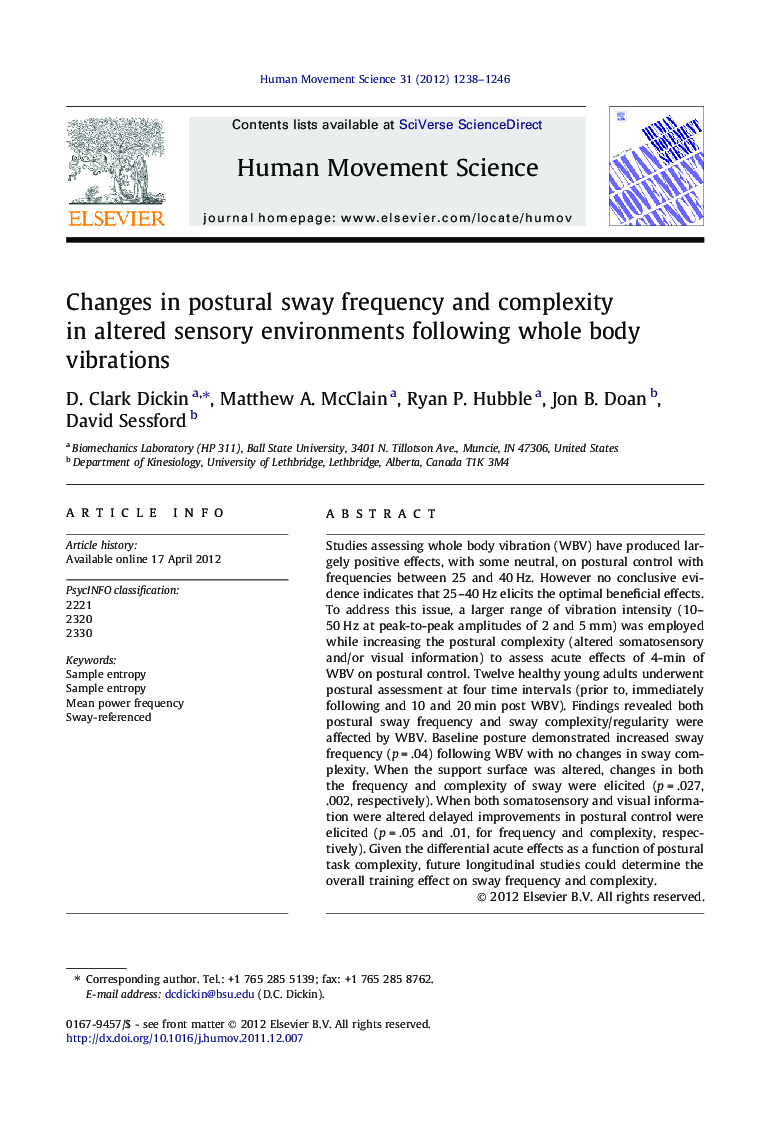| کد مقاله | کد نشریه | سال انتشار | مقاله انگلیسی | نسخه تمام متن |
|---|---|---|---|---|
| 928383 | 922362 | 2012 | 9 صفحه PDF | دانلود رایگان |

Studies assessing whole body vibration (WBV) have produced largely positive effects, with some neutral, on postural control with frequencies between 25 and 40 Hz. However no conclusive evidence indicates that 25–40 Hz elicits the optimal beneficial effects. To address this issue, a larger range of vibration intensity (10–50 Hz at peak-to-peak amplitudes of 2 and 5 mm) was employed while increasing the postural complexity (altered somatosensory and/or visual information) to assess acute effects of 4-min of WBV on postural control. Twelve healthy young adults underwent postural assessment at four time intervals (prior to, immediately following and 10 and 20 min post WBV). Findings revealed both postural sway frequency and sway complexity/regularity were affected by WBV. Baseline posture demonstrated increased sway frequency (p = .04) following WBV with no changes in sway complexity. When the support surface was altered, changes in both the frequency and complexity of sway were elicited (p = .027, .002, respectively). When both somatosensory and visual information were altered delayed improvements in postural control were elicited (p = .05 and .01, for frequency and complexity, respectively). Given the differential acute effects as a function of postural task complexity, future longitudinal studies could determine the overall training effect on sway frequency and complexity.
► Whole body vibration has demonstrated effectiveness at improving postural stability.
► Sway frequency and complexity were altered in response to vibration.
► Vibration demonstrated greater benefits in more complex sensory environments.
► Altered sensory environments may benefit more from vibration training.
Journal: Human Movement Science - Volume 31, Issue 5, October 2012, Pages 1238–1246